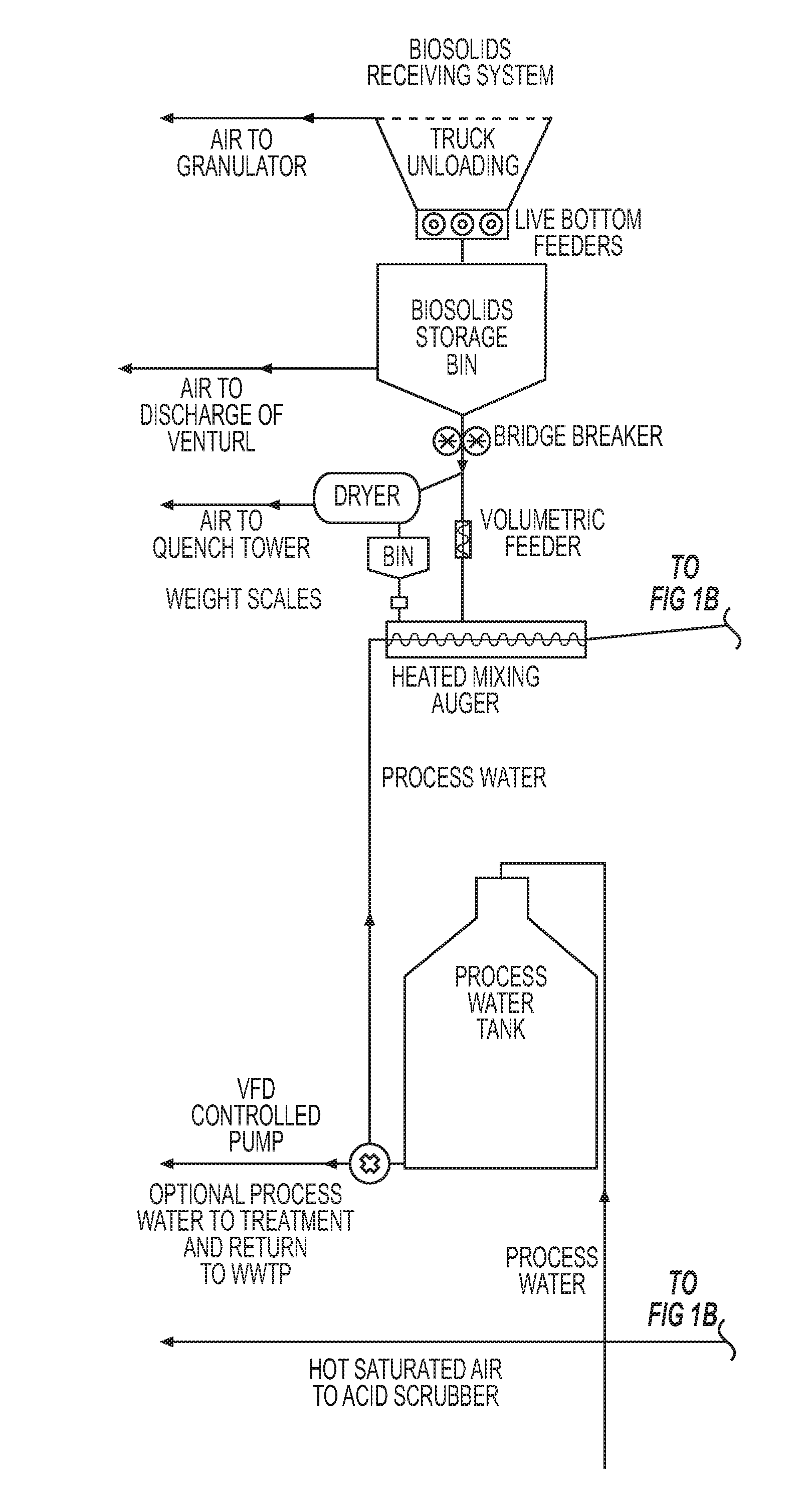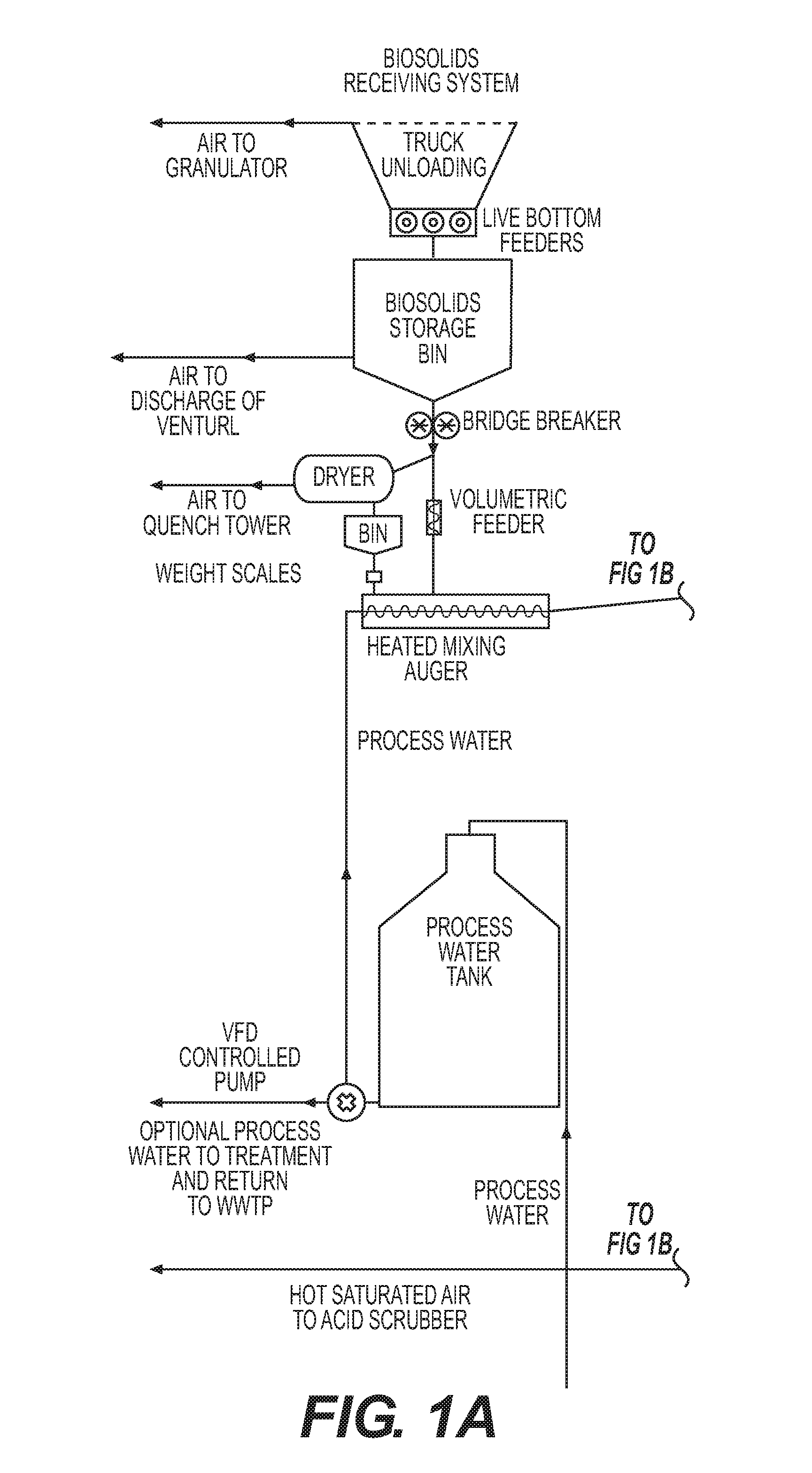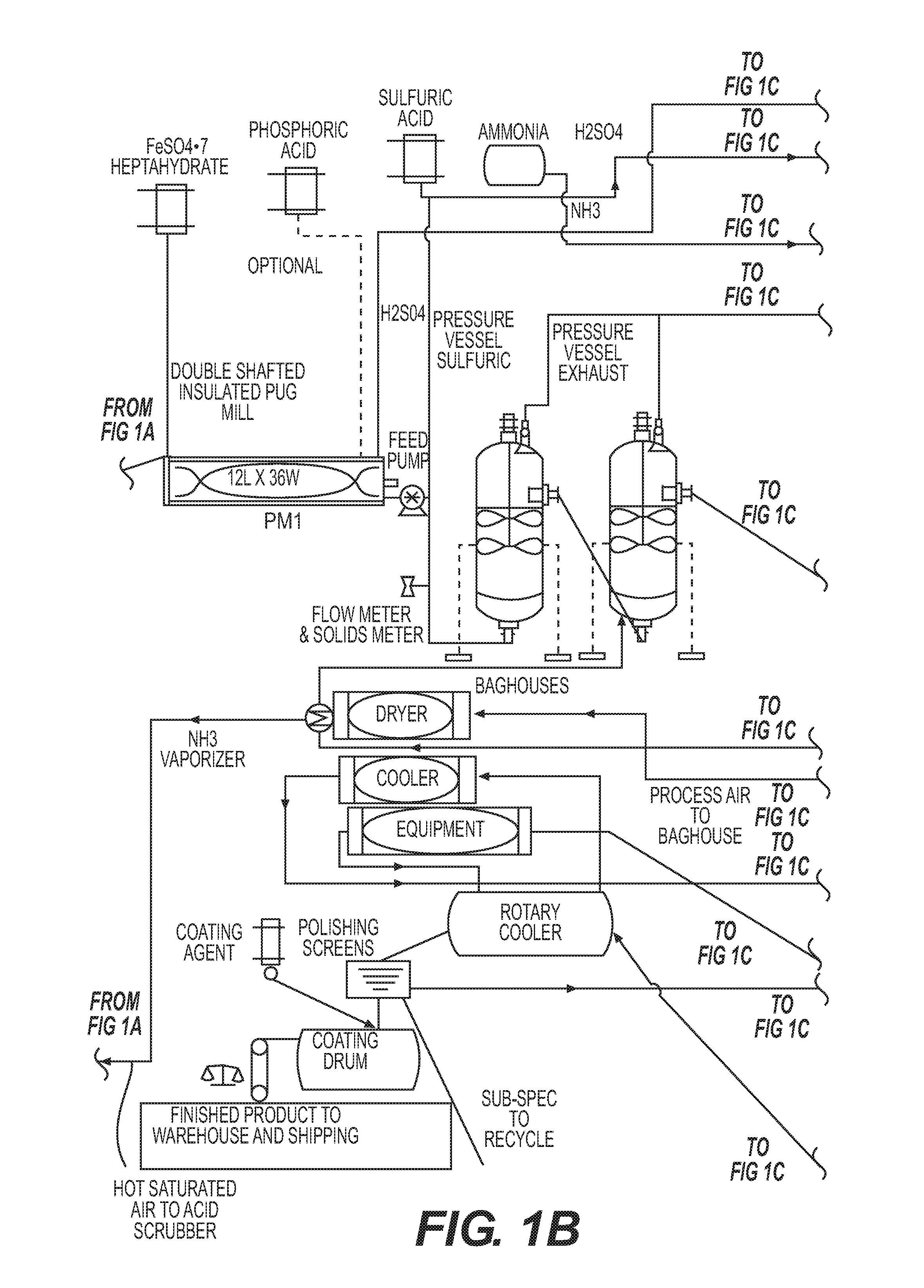High Value Organic Containing Fertilizers and Methods of Manufacture
a technology of organic fertilizers and fertilizer products, applied in the field of fertilizer and fertilizer products, can solve the problems of huge problem of municipal organic disposal, high cost in environmental damage, high cost of procedures, etc., and achieve the effect of increasing the value of fertilizers
- Summary
- Abstract
- Description
- Claims
- Application Information
AI Technical Summary
Benefits of technology
Problems solved by technology
Method used
Image
Examples
example 1
[0114]Wet community organics comprised of biosolids from a municipal waste water plant are received at the fertilizer manufacturing plant of this invention with a percent solids of 16.0 percent. The plant is set up to operate at a wet biosolids processing rate of 220 wet tons per day. A portion of this 16% solids material was dried in a pre-dryer to 85% dry solids at a rate to yield sufficient 85% dry material to mix with the 16% material to yield a preferred percent solids of 20% to 26% but more preferably 22% to 24% solids. Additionally, a dry solids material of iron sulfate was mixed in the same mixer sufficient to yield a concentration of 3% iron in the finished fertilizer. This conditioned organics mix is then pumped into the first hydrolysis vessel wherein at the orifice of the pressure vessel it is mixed with 93% sulfuric acid in an amount pre-calculated to yield a degree of heat of hydration of 110° C. (230° F.) and a total of 17% sulfur in the finished fertilizer. The conte...
example 2
Ammonia Absorption
[0115]In this example the fertilizer was manufactured by a similar process with the difference that an amount of ammonia absorbing compound, such as Nutrisphere-N (commercially available from Verdesian Life Sciences), a proprietary nitrogen binding agent, was added into the granulator such that the slow-release component of the N is increased to 45% N from the standard 30% of total N. This increases the commercial value of the fertilizer and rendered 15% more of the contained nitrogen available in the stages of crop growth later than 2 weeks following the original field application of the fertilizer product.
example 3
Nitrogen Release Profiles
[0116]Nitrogen release profiles of the organically modified ammonium sulfate of the invention are determined in comparison to traditional, pure ammonium sulfate fertilizer and pure biosolids as controls. First, ammonium sulfate is applied over sterilized sand in a laboratory environment (ambient temperatures with no sun, water or soil organisms) and allowed to permeate the sand over a period of time. As can be seen in FIG. 6, about 90% of the nitrogen of AS is released through the sand within about one week of application. In comparison, about 35% of the nitrogen of traditional biosolids is released which increased to about 70% over two weeks where it remained. Organically augmented ammonium sulfate of the invention released about 60% of its nitrogen within the first week which increased to about 70% over two weeks.
[0117]Also, a theoretical nitrogen release profile is determined for these same three fertilizer materials in normal soil. Soil is presumed to co...
PUM
 Login to View More
Login to View More Abstract
Description
Claims
Application Information
 Login to View More
Login to View More - R&D
- Intellectual Property
- Life Sciences
- Materials
- Tech Scout
- Unparalleled Data Quality
- Higher Quality Content
- 60% Fewer Hallucinations
Browse by: Latest US Patents, China's latest patents, Technical Efficacy Thesaurus, Application Domain, Technology Topic, Popular Technical Reports.
© 2025 PatSnap. All rights reserved.Legal|Privacy policy|Modern Slavery Act Transparency Statement|Sitemap|About US| Contact US: help@patsnap.com



